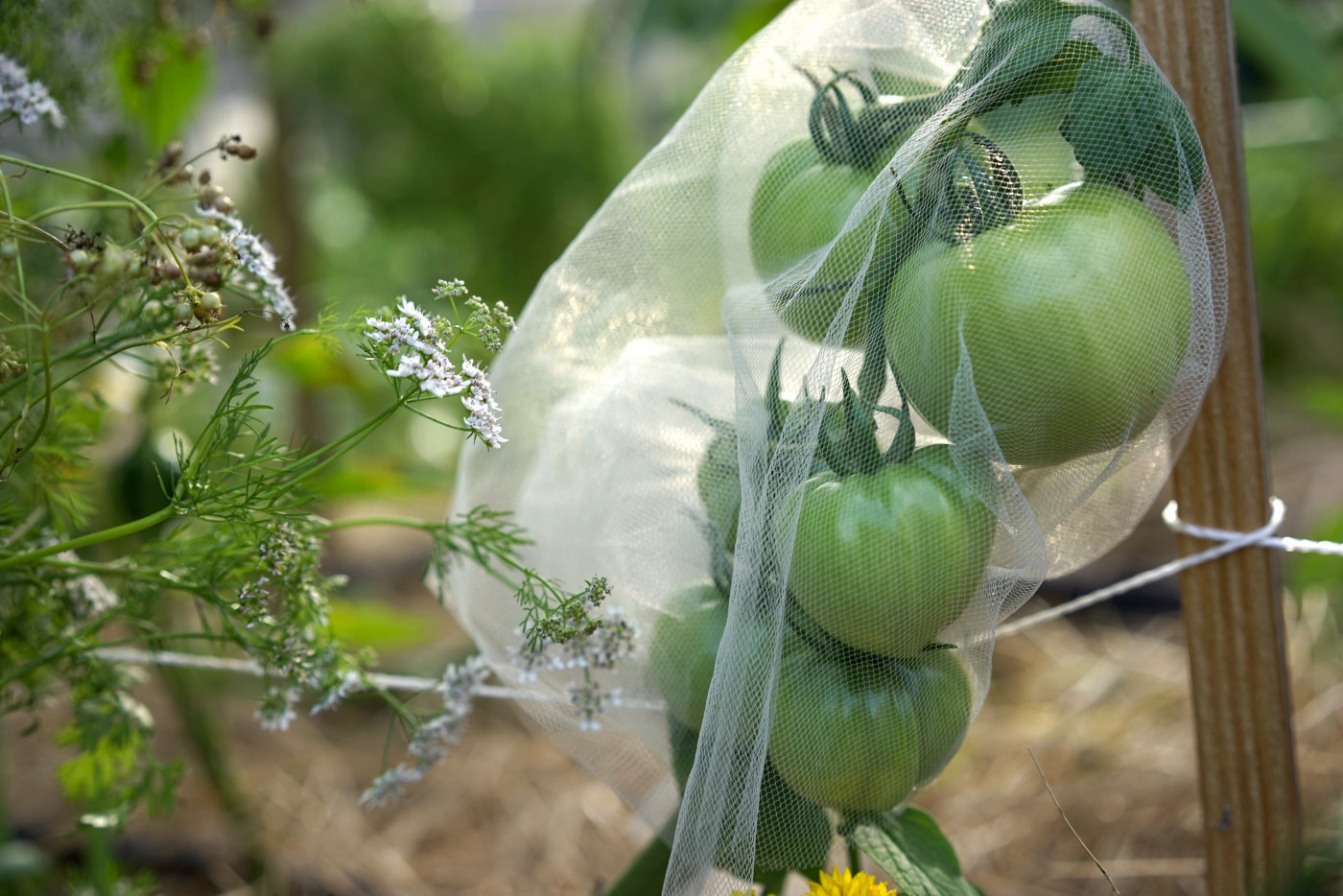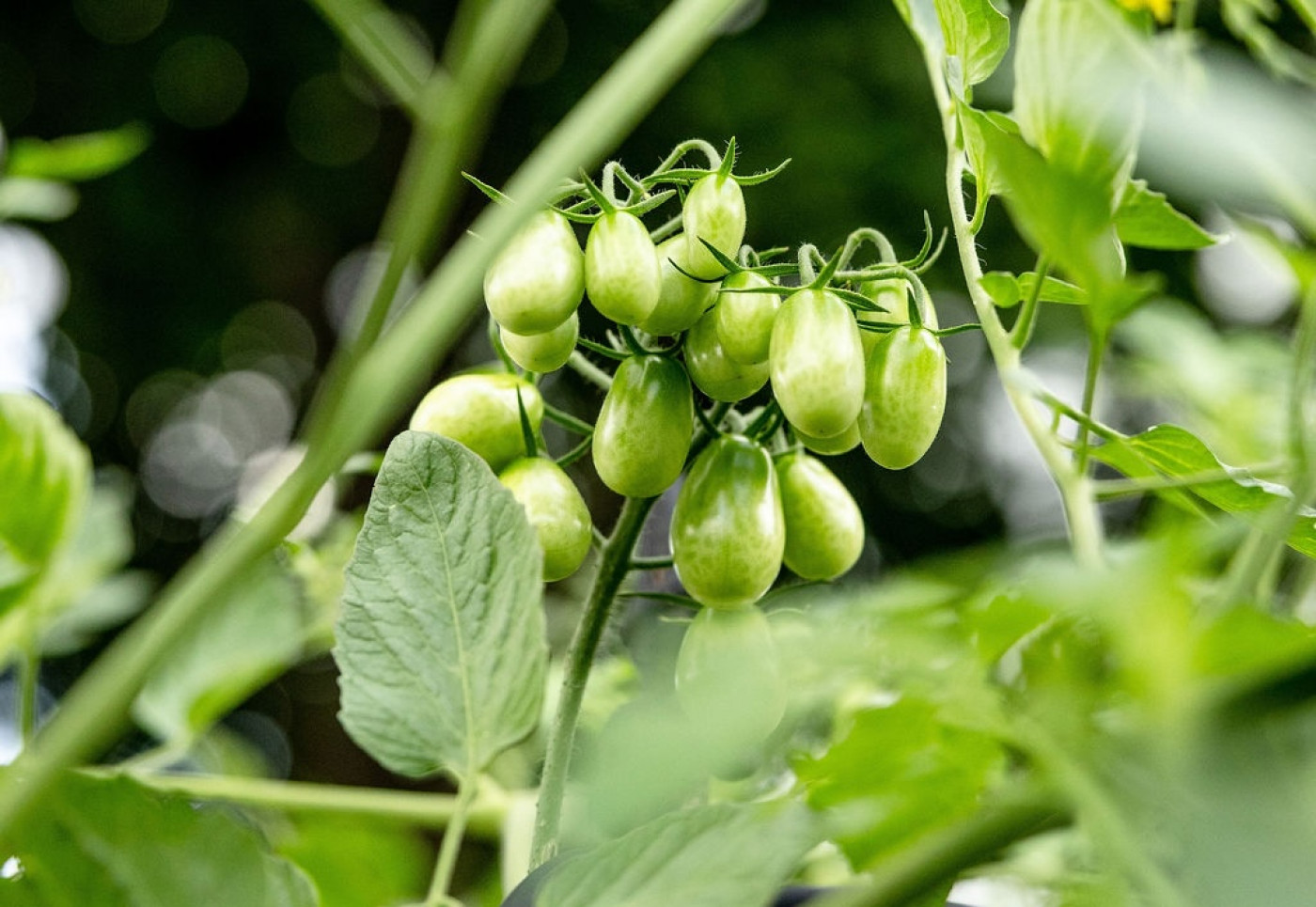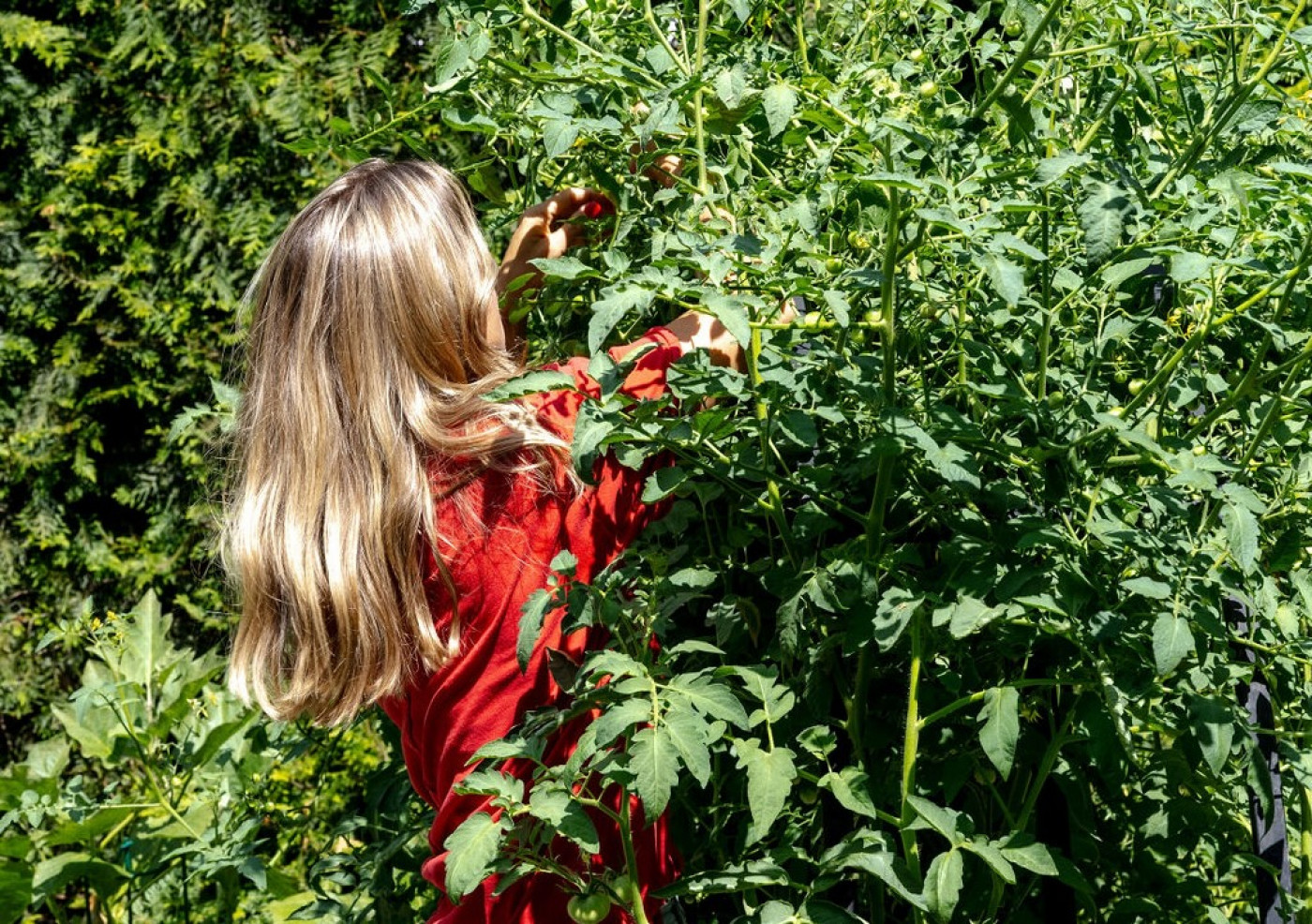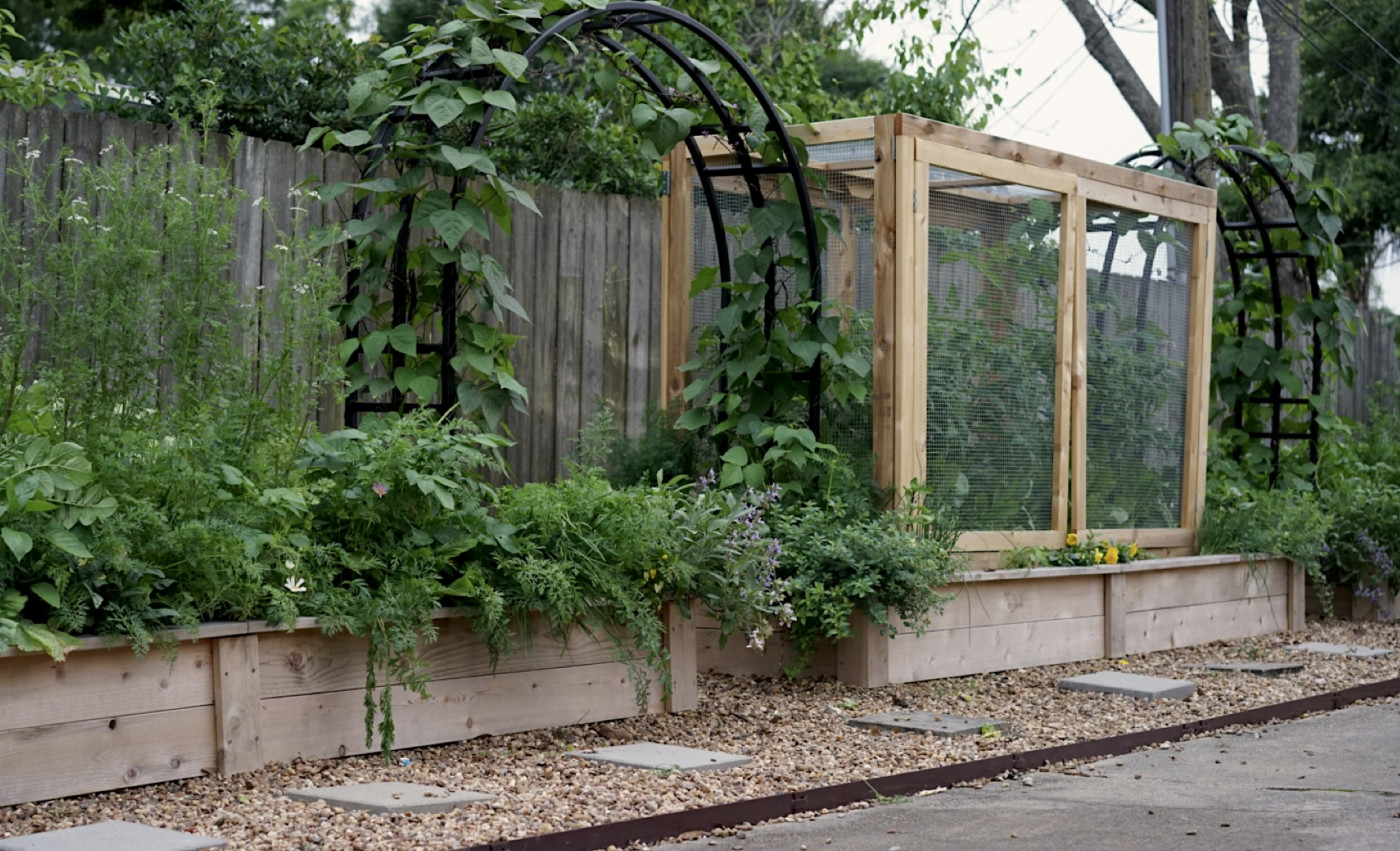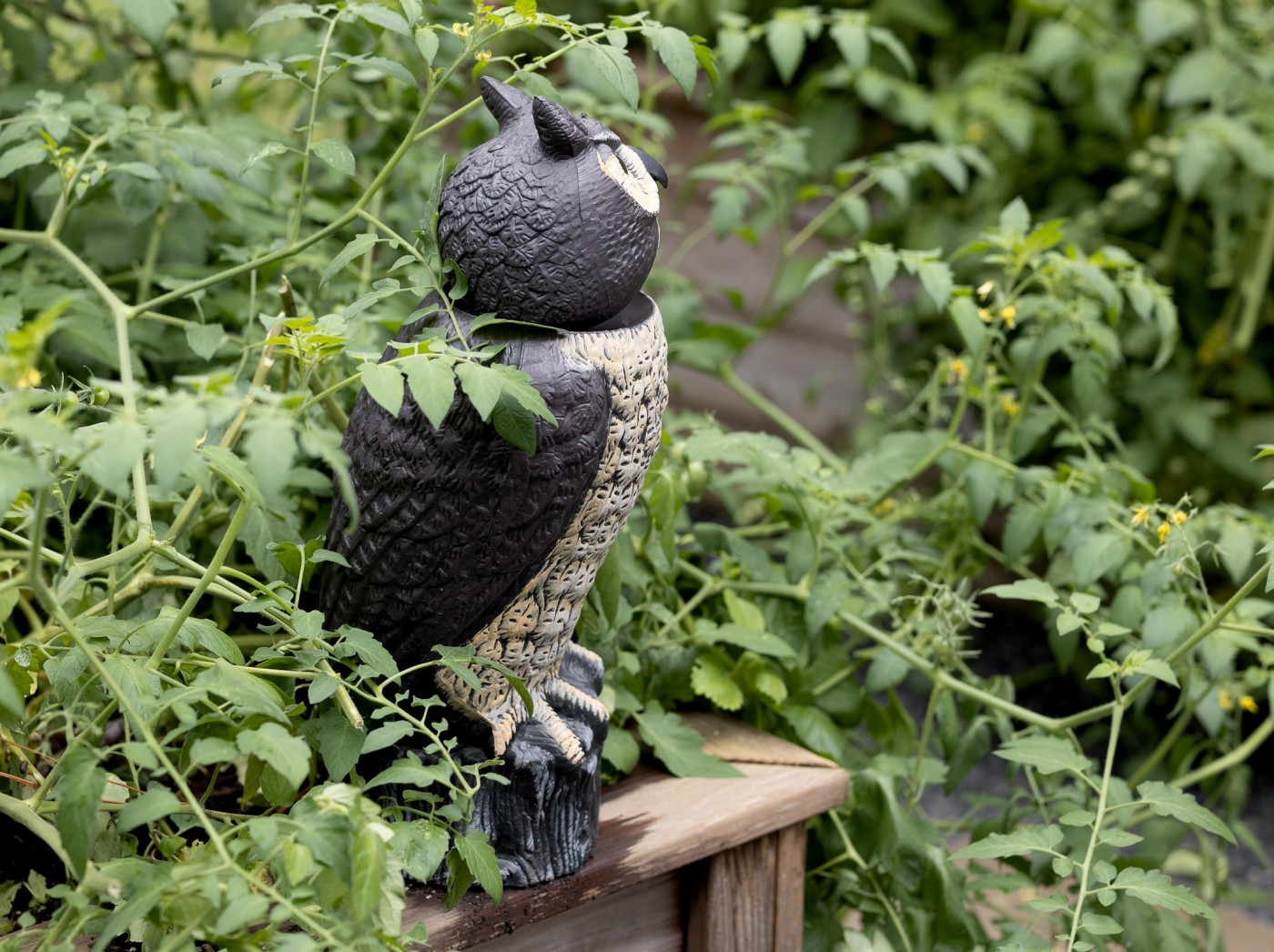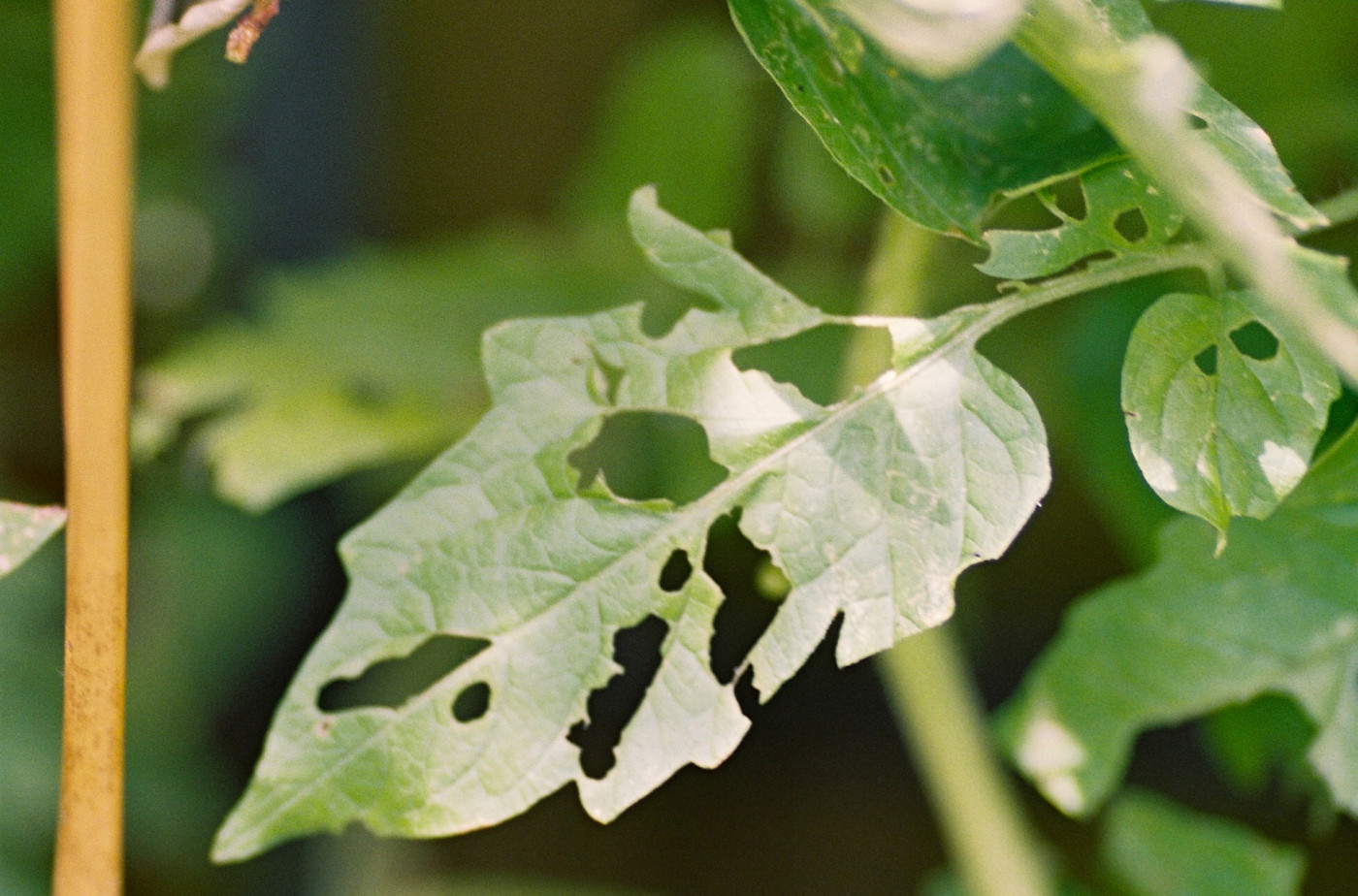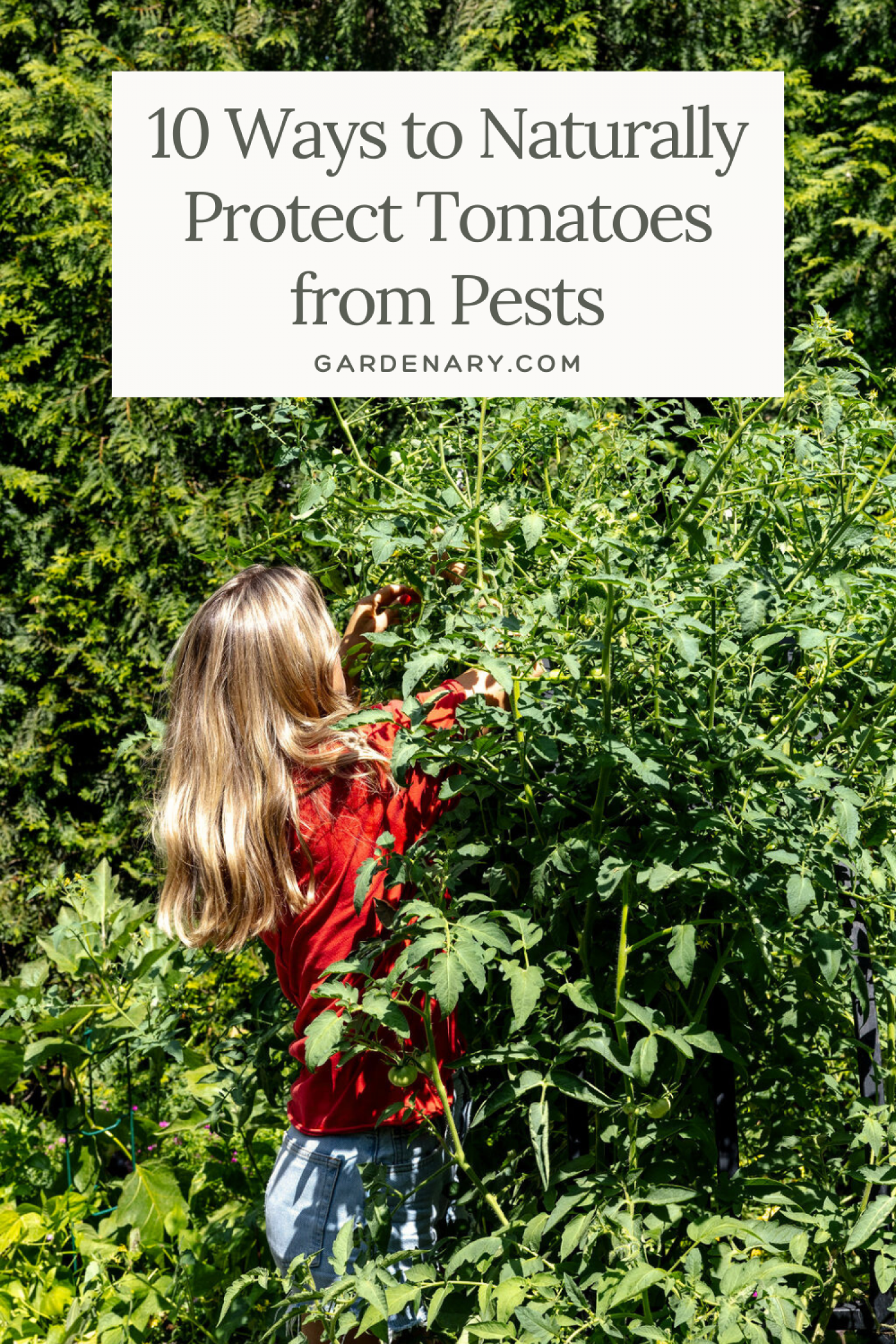Keep Pests off Your Tomato Plants
When I was growing tomatoes in Houston, the squirrels and raccoons often got to my fruit before I could. And as any gardener knows, there are few things quite as disappointing as waiting forever for fruit to ripen only to have it become a snack for something else.
It's not just animals. Tomatoes are favorites amongst insect pests like aphids, hornworms, and whiteflies. They also fall prey to a number of fungal, viral, and bacterial infections.
So how you do you protect your plants?
Keep reading to learn the best ways to manage tomato pests organically in your vegetable garden—no pesticides or animal traps required.
Gardenary's Organic Pest Control Method
Stop fighting pests. Instead, start gardening with them in mind. No panic. No harsh sprays. No endless guessing. Just a thriving, abundant garden that practically protects itself. With the Organic Pest Control Method, you’ll learn the exact steps I take to grow naturally and confidently, season after season.

Head's Up: This article contains Amazon affiliate links. When you purchase through links on this site, we may earn a small commission.
Ways to Organically Protect Tomatoes
Keep Tomatoes off the Soil
Whether you're growing bush or vining tomatoes, supporting them is key. "Tomato plants need lots of room to breathe and good airflow around the leaves to prevent pests and disease," says garden coach Kylie Gilliam, owner of Blue Ribbon Garden. If you let your plant sprawl horizontally, every leaf or fruit that touches the soil is like a little welcome mat for soil-borne pests and disease.
Support options for bush tomatoes include garden stakes and small trellises. Even a tomato cage is better than nothing (though not our preferred option).
Support options for vining tomatoes include a Florida weave trellis, a cattle panel trellis, or a strong metal trellis. Aim for a sturdy structure at least 6 feet (1.8m) tall so that you have plenty of space for growth over the season.
Grow Your Tomatoes in Nutrient-Rich Soil
It might surprise you, but the best pest control starts below the surface—with healthy soil. Research has shown that plants grown in microbial-rich soil demonstrate greater resistance to pests and disease compared to those grown in soil devoid of life. When plants have everything they need in the soil, they produce natural compounds that deter insects and help them bounce back quicker from damage.
So keep your soil as healthy as possible by avoiding synthetic fertilizers (which can strip soil of its natural fertility), applying compost to your garden regularly to add nutrients and support beneficial life forms in the soil, and keeping the surface covered with plants to prevent moisture and nutrient loss.
→ Learn more about keeping your soil healthy.
Start with Strong Plants
The healthiest plants are typically ones given a great start in life.
If you're growing tomatoes from seed, start with seeds from a reputable company. Look for varieties that are resistant to common tomato diseases like blight and leaf spot.
And if you're buying tomato starts, I recommend heading to a local nursery instead of a big box store. Check plants over for yellowing or wilting leaves, which are signs those plants have already been stressed from lack of water or nutrients.
Be on the lookout for visible signs of pests and damage caused by pests (like holes in the leaves). You want to see strong stems and lots of healthy-looking leaves with no signs of discoloration or infection.
Shop Gardenary's Tomato and Pepper Seed Collection
Our Tomato & Pepper Collection is perfect for gardeners who love bold flavors and beautiful variety. This set includes 6 tomato varieties—from juicy slicers to bite-sized cherries—and 5 pepper varieties ranging from sweet and crisp to delightfully spicy.
Add Companion Plants to Deter Pests
Growing aromatic herbs and flowers near your tomato plants can help keep pests away. Here are the best herb and flower companions to plant near tomatoes.
Dill
Dill can serve as a decoy plant to keep tomato hornworms off tomato plants. Its yellow flowers also attract ladybugs and hoverflies, which prey on aphids, squash bugs, thrips, and flea beetles.
Marigolds
Marigold blooms attract pollinators to ensure your tomato flowers are pollinated, which will maximize your harvest. They’ll also attract pest predators like parasitic wasps, which are deadly to tomato hornworms. Even more, marigolds release a compound called pyrethrum that repels aphids, whiteflies, and the moths that lay tomato hornworm eggs. So don't plant tomatoes without adding some marigolds to the border of your garden beds. (I recommend low-growing French marigolds.)
Basil
Basil's scent deters hornworms, aphids, and other common tomato plant pests. Tomatoes planted near basil also tend to be more productive, and some gardeners swear the fruits taste better.
Calendula
Calendula serves as a wonderful trap crop, keeping aphids off your fruiting plants.
Sunflowers
Sunflowers act as both a sacrificial plant for pests and a magnet for beneficial insects. As a trap crop, they’re most effective against stink bugs and leaf-footed bugs.
Chives
The sulfurous compounds that give chives their strong scent keeps aphids, spider mites, leaf miners, and slugs at bay.


Prune the Leaves Regularly
If you're growing a vining tomato type, make sure to prune your plants regularly. Again, tomato plants need good air circulation around their leaves, or they'll fall pray to a range of viral, bacterial, and fungal disease. Pruning ensures that each leaf you keep gets the air and sunlight it needs.
Prune your tomato plants every 1 to 2 weeks to encourage stronger, healthier growth. Start by cutting any leaves that are discolored or spotted or that have holes or tears in them. Then, remove about a third of the non-producing stems near the base of the plant.
→ Learn more about the best way to prune your tomatoes.
Keep the Soil Surface Clean
I'm not a fan of using wood mulch around tomato plants because it just gives pests a convenient place to hide. Along those lines, you also don't want to let your soil surface be littered with dead leaves and debris.
After you've done your weekly pruning, use a little hand rake or your fingers to clean the soil around the base of your plants. Remove any rotting fruits that have fallen from the plant—these are little pest magnets.
Naturally protect your garden while adding beauty and biodiversity.
This curated seed set includes powerful herbs and flowers known to deter pests and attract beneficial pollinators, creating a balanced, organic ecosystem in your garden. Ideal for gardeners who want to grow without chemicals, the Gardenary Pest Control Collection features vibrant, fragrant plants that both beautify and defend your beds.
Protect Individual Fruits
I love using garden mesh and row covers to protect plants growing in my garden from pests, but fruiting plants can be difficult to cover. You could cover your entire plant with mesh if you wanted and then open them up during the day to give pollinators access. (Pests do tend to be more active at night, but this still wouldn't be a fool-proof system.)
I find it easier to instead protect individual fruits or clusters with mesh bags (the kind you might store jewelry in). You can buy fruit mesh bags or cut up pieces of tulle if you don't have any bags handy. It seems simple, but this barrier is often enough to protect tomatoes from larger pests like squirrels and raccoons.
Add Physical Barriers
If you want a more permanent barrier, you could consider building a wood and metal cage (aka a garden house) over your entire garden bed. This is only a solution for larger pests like squirrels since moths and other small pests would obviously still be able to enter through the caging material.
When I had a problem with squirrels eating my tomatoes in my Houston garden, I built a cage that went over the entire garden bed to keep animals out but still let sunlight, rain, and air in.
The best material to use for caging is hardware cloth.
Think About the Food Chain
Even the larger pests that come for your tomatoes are prey animals, so think about the type of predators that squirrels and raccoons are afraid of. You don't necessarily need to invite those animals into your garden; all you have to do is suggest they could be nearby.
Here are some simple ways you can do that:
- Let your dog lift his leg around your garden beds to introduce a scent similar to that of larger predators like wolves or coyotes.
- Place plastic owls and rubber snakes around your garden. (Buy the most realistic "predator" you can find and move it around the garden space regularly.)
- Buy predator urine (you can find coyote urine spray or even granules) to spread around your garden perimeter.
- Attract owls to your yard by installing an owl box in a tall tree.
Harvest Early
If you're desperate, you could always cut clusters of fruit as soon as they’re starting to blush (turn yellow) and bring them indoors to rest on a windowsill or inside a brown bag. As long as the fruits have reached their mature size, they should continue to ripen off the vine.
Tips for Dealing with Common Tomato Pests
While some pests are regional, most gardeners can expect to find the usual suspects attacking their tomato plants. Tomato pests include hornworms, aphids, cutworms, flea beetles, tomato fruitworms, leaf-footed bugs, and whiteflies. You might also face animal pests like squirrels, raccoons, and birds.
Hornworms
Tomato hornworms are large green caterpillars that camouflage themselves on your tomato plants and quickly devour all the leaves. You’ll know you have them if entire leaves start disappearing from your plants (usually starting at the top).
Treatment Options
- Search for green caterpillars on the stems and leaves of your plants. Pick off any pests you find and drop them into a bowl of soapy water.
- Come back at night with a blacklight, which makes hornworms glow bright green.
- Leave hornworms covered in what looks like tiny white eggs be (they're hosts now for parasitic wasps, and that's a good thing, I promise).
- Spray your plants with garlic barrier or, in the case of a severe infestation, Monterey B.t.
→ Find more ways to prevent and treat tomato hornworms.
Aphids
Aphids are small, sap-sucking insects that can weaken plants and spread diseases. You might notice curling or yellowing leaves, and if you look closer, tons of tiny aphids all clustered together.
Treatment Options
- Use a strong stream of water to dislodge aphids from tomato plants and reduce their numbers.
- Make your own homemade aphid spray using dish soap and water, and spray heavily onto tops and bottoms of leaves. Repeat every couple of days.
- Plant more flowers to attract aphid predators like ladybugs and lacewings. (While you can buy these insects to introduce to your garden, I've found they don't stick around long.) Check out this list of 15 flowers to plant to attract ladybugs.
→ Learn more about organic aphid control.
Cutworms
Cutworms are the black, gray, or brown larvae of night-flying moths. They hide in the soil or under mulch near plant bases and snip seedlings right at the base.
Treatment Options
- Place stem collars around seedlings to block larvae at soil level.
- Sprinkle coffee grounds or crumbled egg shells around your seedlings.
- Hand-pick at dusk or early morning when larvae are active.


Flea Beetles
These pests are shiny little black bugs that jump around like fleas. Their chewing leaves small, round or irregular-shaped holes on the leaves of your plants. If you inspect damaged plants, you'll likely find little colonies of small black beetles.
Treatment Options
- Use a gloved hand to squish as many flea beetles as possible. It's gross but effective.
- Give your leaves a good, hard soak with the water hose.
- Prune the leaves most affected by these pests.
- If damage continues, dilute 1 tablespoon of Dr. Bronner's Castile Soap into 1 quart of water (32 oz) and spray the leaves of affected plants heavily.
→ Find more ways to treat and prevent flea beetles.
Tomato Fruitworms
Also called corn earworms, these are small brown, yellow, green, or black caterpillars that come from adult moths. They eat the stems, leaves, and fruits of tomato plants.
Treatment Options
- Pick off any pests you find and drop them into a bowl of soapy water.
- Spray your plants with garlic barrier or, in the case of a severe infestation, Monterey B.t.
Leaf-Footed Bugs
Leaf-footed bugs feed and mate on your tomatoes, leaving you with foul-tasting, discolored fruits you’re just going to toss right in the trash. They're so called because their hind legs look like leaves.
Treatment Options
- Hand-pick any pests you find and drop them into a bowl of soapy water.
- Plant sunflowers to act as trap crops.
- Invite birds into your garden with a bird bath or fountain. Birds eat leaf-footed bugs.
Whiteflies
Whiteflies are tiny white flying insects (like mini moths) that gather on the undersides of leaves and feed on plant sap. Like aphids, these soft-bodied pests cause yellowing leaves and stunted growth.
Treatment Options
- Use yellow sticky traps to monitor and reduce adult populations.
- Spray the undersides of leaves with insecticidal soap. Mix about 1 tablespoon of Dr. Bronner’s Castile Soap per 1 quart (32 oz) of water. Spray underneath the leaves.
- Encourage beneficial insects like ladybugs, lacewings, and parasitic wasps.
Squirrels & Raccoons
These animal pests are sneaky and persistent about stealing all your fruits.
Treatment Options
- Move fake owls or scarecrows around your garden.
- Cover developing fruit with fruit mesh bags.
- Install a motion-activated sprinkler.
- Spray predator urine around your garden perimeter. Some gardeners also collect and scatter human or dog hair as a deterrence. (A nursery employee once recommended I feed my husband a steak and let him pee around my garden. Worth a shot if you're interested!)
- Let your cat or dog hang out in your garden to spread their scent.
Birds
Birds can be super beneficial in your garden by helping to control insect pests like caterpillars and stink bugs. Occasionally, birds can cause more harm than good by stealing tomato fruits.
Treatment Options
- Move fake owls or scarecrows around your garden.
- Cover developing fruit with fruit mesh bags.
- Cover entire plants with netting.
- Provide a bird bath or fountain, and maintain a fresh water supply. Birds often eat fruits when they're thirsty.


Gardenary's Organic Pest Control Method
Stop fighting pests. Instead, start gardening with them in mind. No panic. No harsh sprays. No endless guessing. Just a thriving, abundant garden that practically protects itself. With the Organic Pest Control Method, you’ll learn the exact steps I take to grow naturally and confidently, season after season.

When it comes to protecting your tomato plants from pests, there's no one-size-fits-all approach. Try planting different companion plants, make your garden attractive to beneficial insects, and use physical barriers when needed.
The one strategy you don't want to try is spraying harmful chemical pesticides. In the worst case scenario, you remove the affected tomato plants and start over. There's no shame in that, and it's a lot better for you, your garden, and the environment.
To learn more about different ways to prevent and manage pests in your garden, check out our brand-new Organic Pest Control Method. Through comprehensive guides and video lessons, we dive into ways to protect your garden without panicking or reaching for harsh sprays. You'll learn the exact steps I take to grow tons of tomatoes naturally and confidently, season after season.

